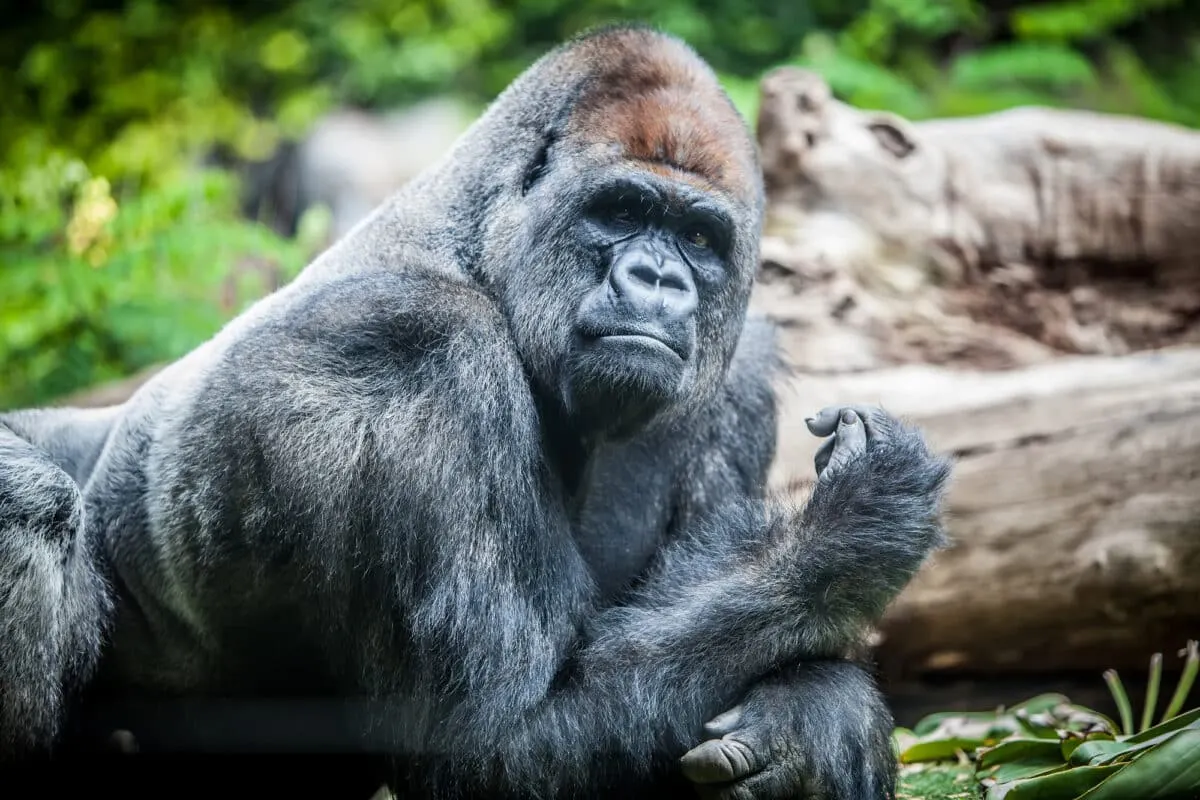Regarding wildlife survival and adaptation, mother nature has equipped each animal species with unique strengths, capabilities, and defenses. Among the animals thriving in the African wilderness, gorillas and African forest buffalos stand out uniquely. Despite their physical differences, gorillas and African forest buffalos are known for their fierce and protective nature.
Gorillas are highly protective of their young and clan members, and African forest buffalos are highly territorial, especially when they feel threatened, or their offspring are in danger.
In this article, we will delve into the differences between the two species and explore what makes them both unique and remarkable in their own right.
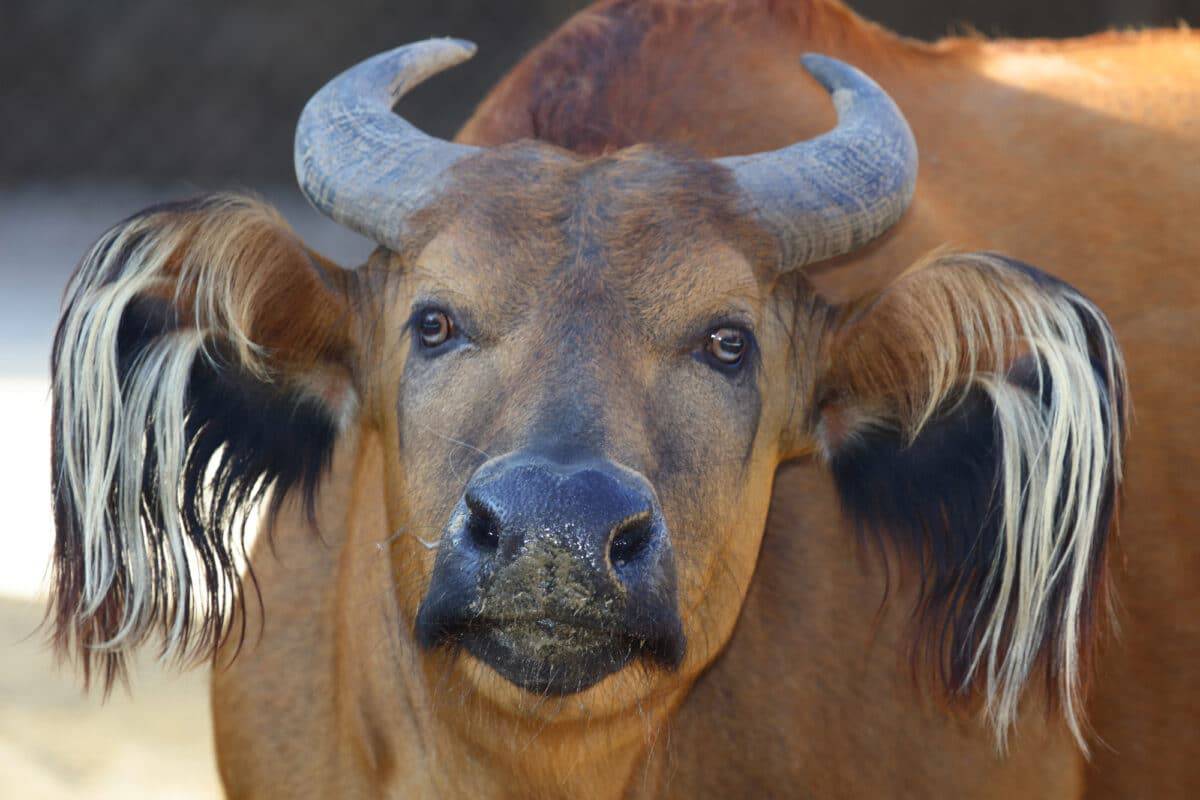
Jump ahead to any section below!
Comparison Table
| Features | Gorillas | African Forest Buffalos |
| Protective Nature | Fierce and protective of offspring and clan members | Territorial and aggressive, especially when young are in danger |
| Repelling Intruders | Use impressive strength and size to intimidate enemies | Charge at any perceived threat, using sharp horns as weapons |
| Physical Characteristics | Large primates, muscular build, broad shoulders, long arms | Massive animals, stocky build, shaggy coats, curved horns |
| Environmental Adaptation | Inhabit rainforests of central and east Africa | Found in dense forests of central and west Africa |
| Habitat | Thrive in dense tropical forests with abundant rainfall | Inhabit lush vegetation and moderate temperature regions |
| Threats | Deforestation, habitat loss, and poaching | Habitat loss, poaching, infectious diseases, and climate changes |
Gorillas: Fierce And Protective Nature
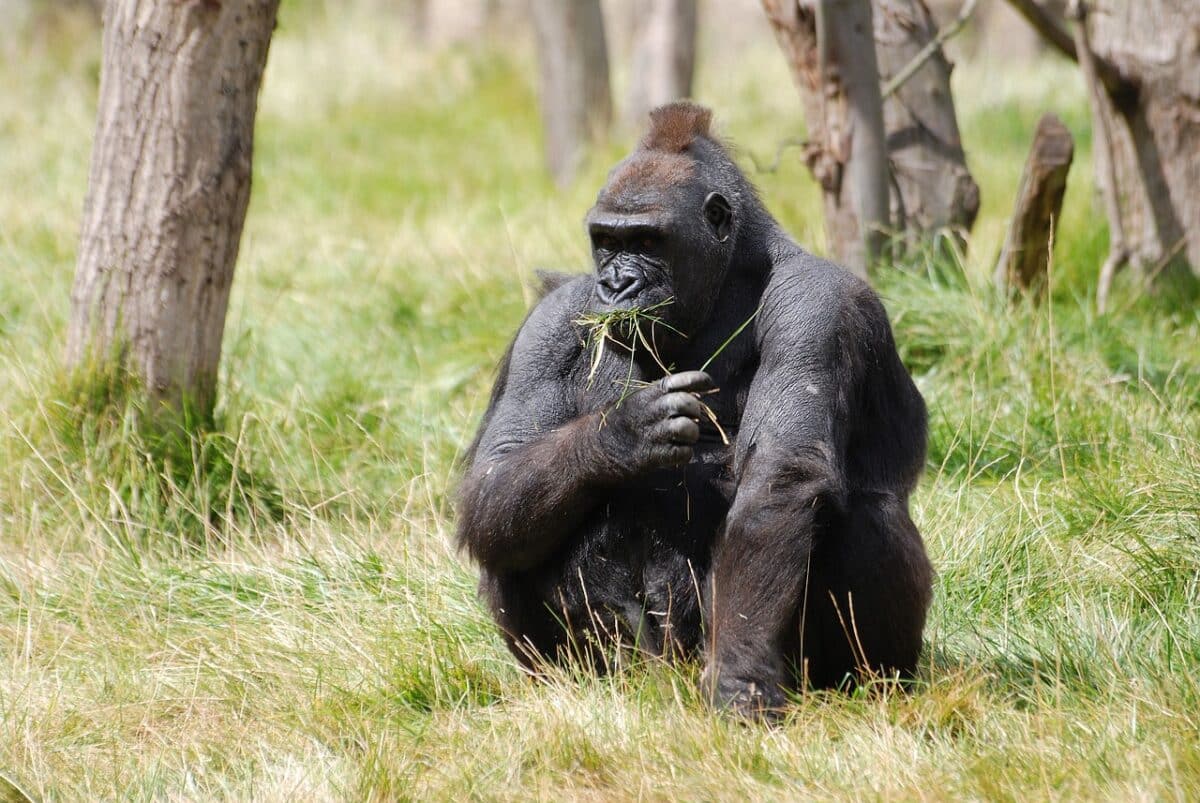
When protecting animals, gorillas are a prime example of what nature can give. These majestic creatures are incredibly fierce and protective of their offspring and clan members. Whether against other gorillas or different animals, they will stop at nothing to keep their clan safe.
Describing gorillas’ protective behavior towards their offspring and clan members, it’s essential to note that they will risk their lives to ensure their loved ones’ safety. They will go to great lengths to protect their young, from shielding them during attacks to taking them to safety during dangerous situations. They also form tight-knit communities where members look out for one another.
Gorillas’ Ability To Repel Intruders
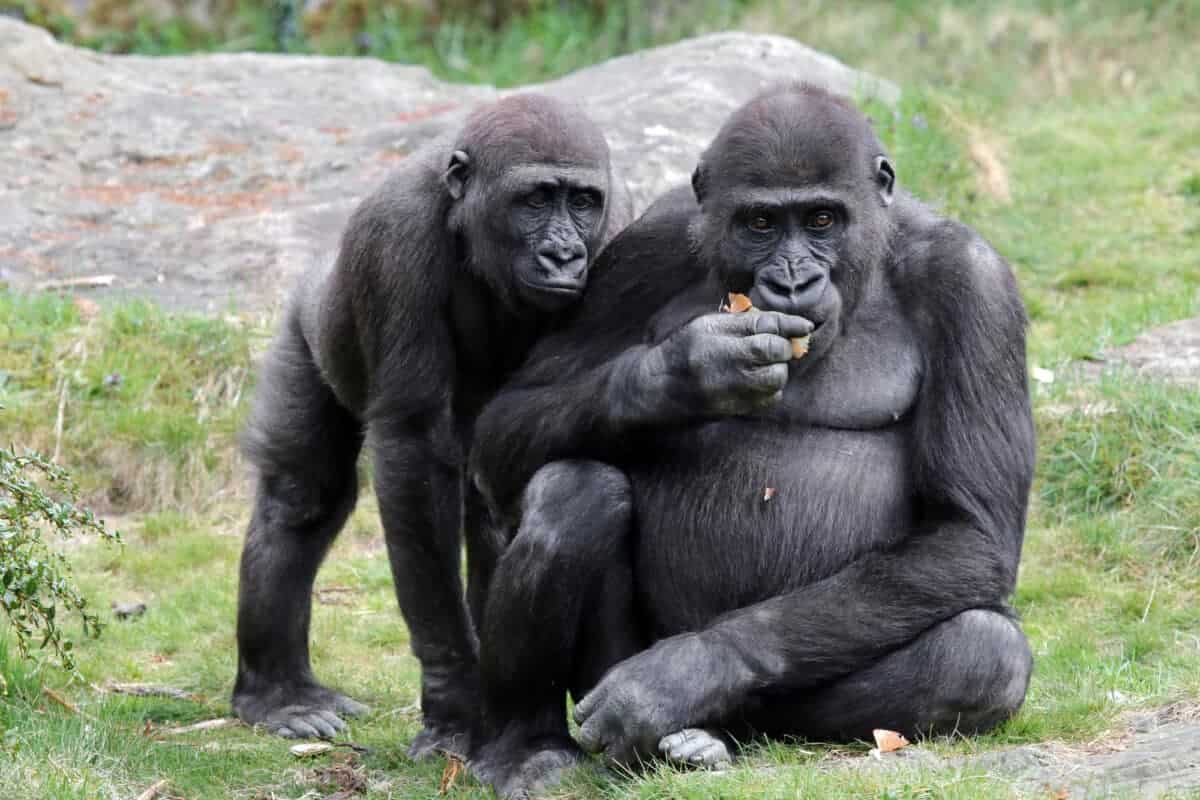
Gorillas’ ability to repel intruders is second to none. Whether it be another gorilla trying to take over their territory or other animals trying to invade their space, gorillas will not back down. They will use their impressive strength and size to intimidate their enemies, ensuring they will not tolerate threats.
Examples of notable gorilla behavior in the wild are plenty. In one instance, gorillas banded together to defend a young clan member from a pack of hyenas. In another case, a male gorilla took on five lionesses when he felt his clan was in danger.
Gorillas are incredibly fierce and protective animals, making them one of nature’s most incredible gifts. Their ability to repel intruders and protect their young and clan members are remarkable feats that demonstrate their unique strengths and capabilities.
African Forest Buffalos: Territorial And Aggressive
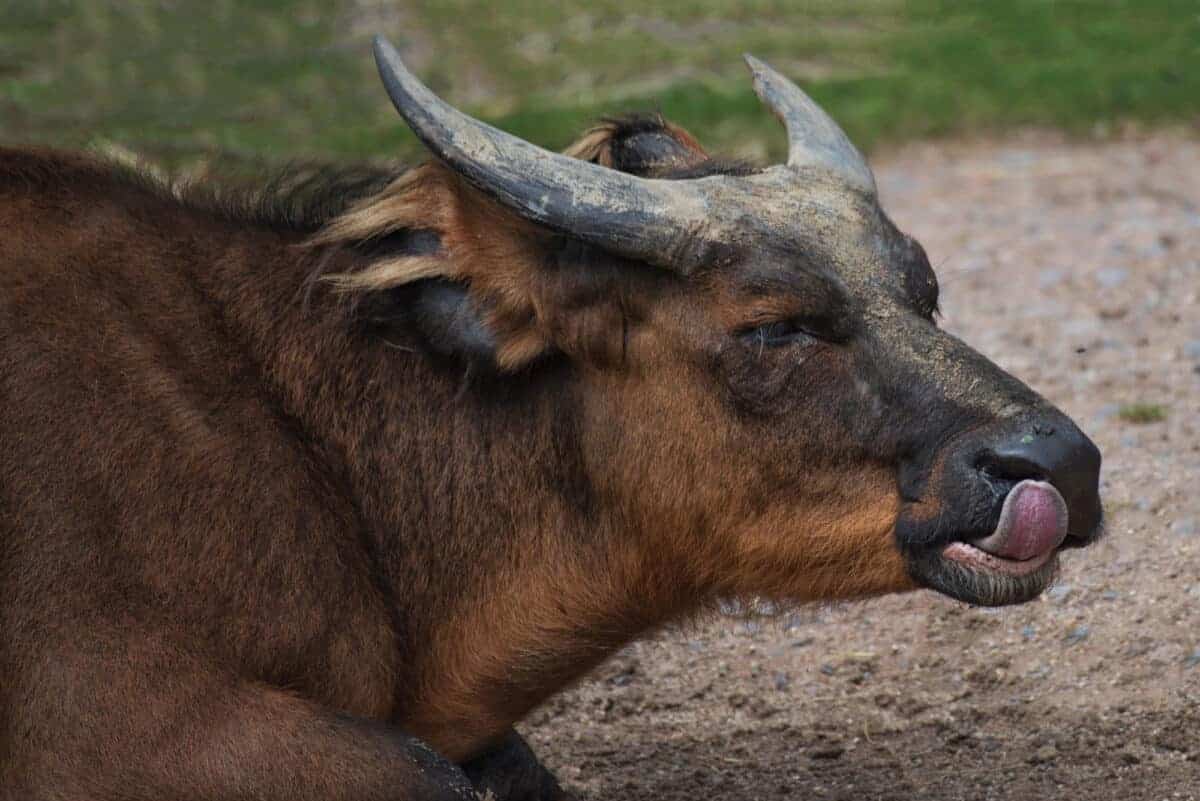
The African forest buffalos’ territorial nature is one of their defining characteristics. They are known for fiercely defending their territory, particularly when it comes to their offspring. The buffalo herds will not hesitate to charge at any perceived threat, making them formidable in the wild.
- Extreme Behavior – When feeling threatened, African forest buffalos’ behavior can become extremely aggressive. This is especially true when their young are in danger. They use their sharp horns as weapons and are not afraid to use them in defense.
If a predator, such as a lion or a leopard, tries to attack a buffalo’s offspring, the herd will charge at the predator as a group, using their combined strength to overwhelm the attacker.
- Notable Behaviors In The Wild – African forest buffalos exhibit many notable behaviors in the wild. For example, their herds can consist of up to 1000 individuals, making them one of the largest herds among African animals. Such large herds help to protect the young, as there are many adults to defend them.
Additionally, their aggressive nature is not limited to only threats from predators. Buffalo herds have been known to charge at humans when they feel threatened, making them dangerous animals to approach without caution.
Physical Differences Between Gorillas And African Forest Buffalos
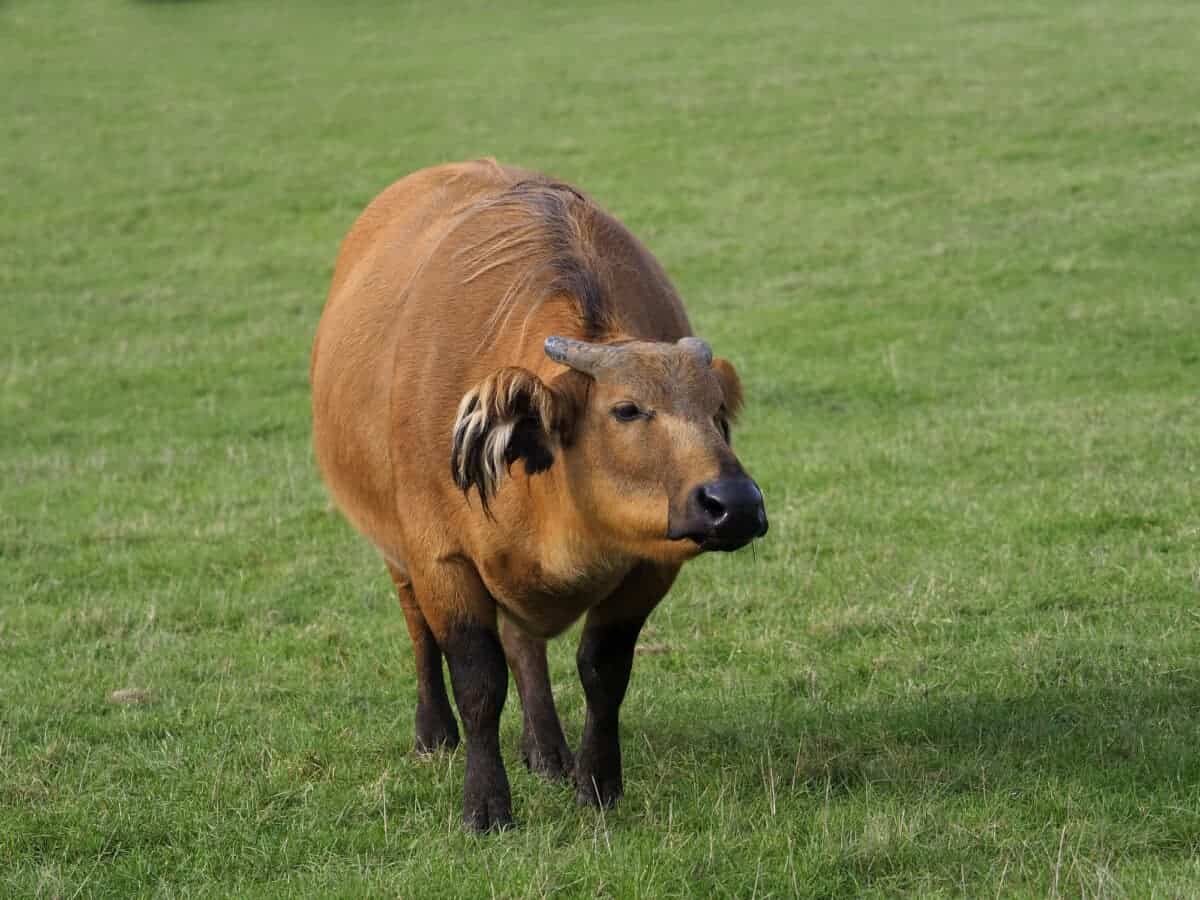
Gorillas are one of the largest primates. They can stand up to six feet tall and weigh over 400 pounds. They have a muscular build, with broad shoulders and long, powerful arms that they use for climbing trees. As well as moving through the thick forest vegetation. Gorillas have short, coarse hair covering their entire body. Which helps protect them from insect bites and other irritants in their environment.
African forest buffalos are also massive animals weighing up to 1,100 pounds, with a stocky build that gives them a sturdy appearance. They have a shaggy coat of dark brown or black hair and distinctive, curved horns that grow outward and then inward toward their face – almost as if they’re protecting their eyes, mouth, and nose. Their horns can grow up to five feet long, making them an intimidating force to be reckoned with.
Go and Witness the Heaviest African Buffalo Ever Found.
How These Physical Differences Play A Role In Their Unique Capabilities And Behaviors
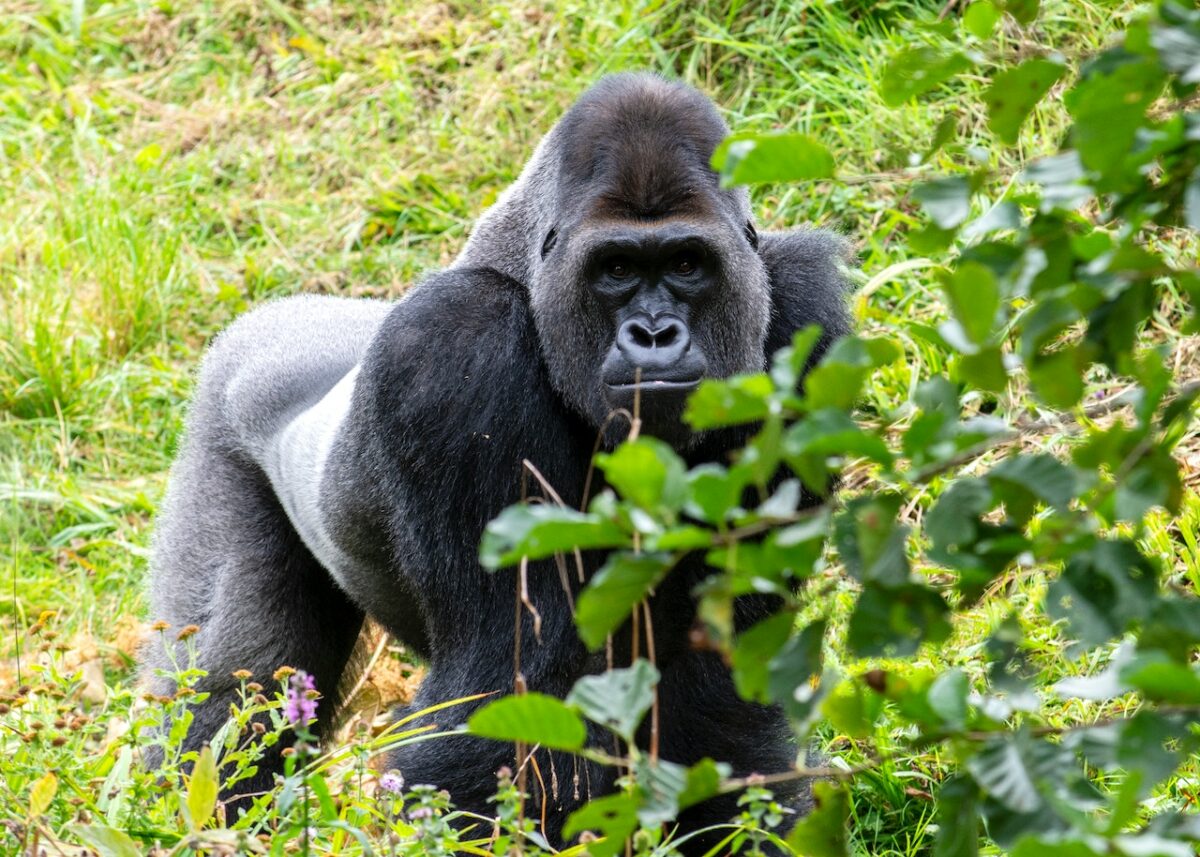
The physical characteristics of gorillas and African forest buffalos significantly affect their abilities to adapt and thrive in their respective environments.
Gorillas’ muscular build and long arms give them the strength and agility to climb trees and easily move through the thick vegetation of the African forest. Their short, coarse hair offers protection against external irritants and parasites often found in their natural habitat.
It’s protective and nurturing nature, reflected in their parenting and social behavior, helps them live in cohesive groups and safeguard their clan members from potential threats.
In contrast, African forest buffalos’ stocky build and curved horns enhance their defensive capabilities, especially when protecting their offspring. Their shaggy coat helps them stay warm in the colder months while also helping them blend into the forest surroundings to avoid predators.
African forest buffalos are known to be extremely territorial and aggressive, often charging at potential threats to defend their space and young ones.
Environmental Factors That Affect African Forest Buffalos And Gorillas
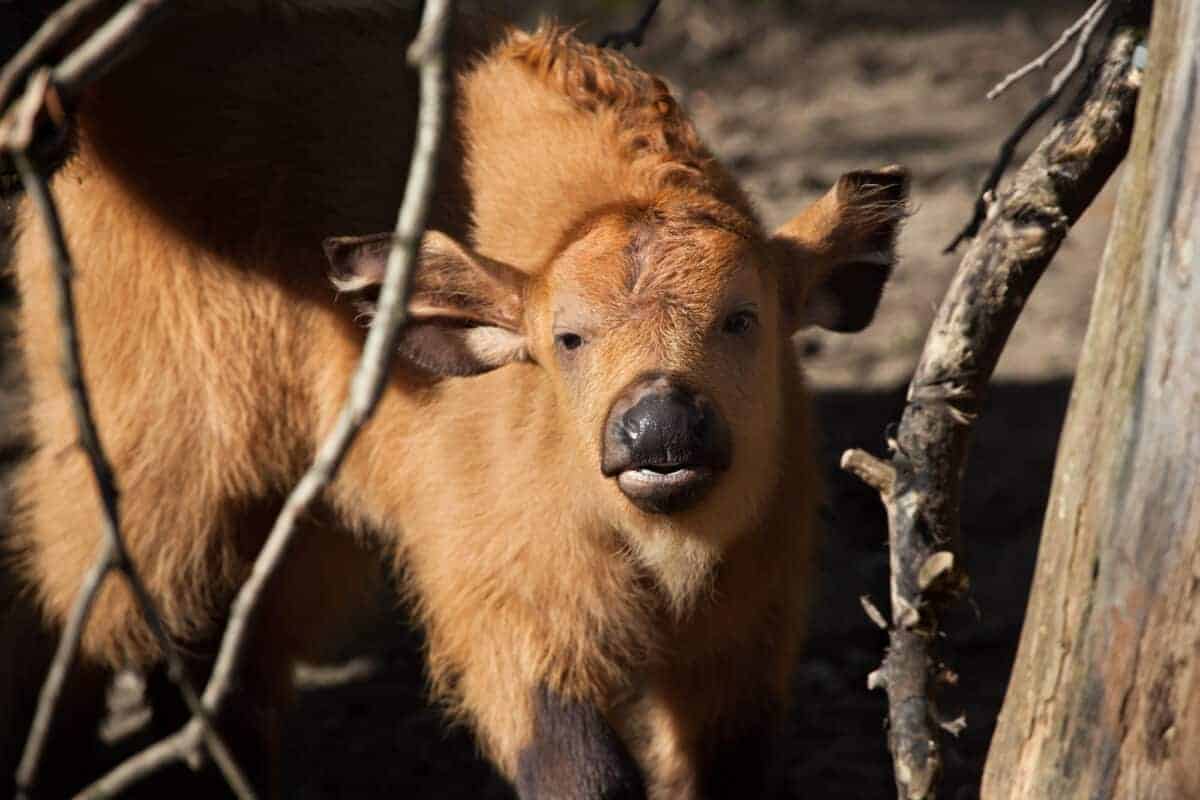
African Forest Buffalos and Gorillas are two of the fascinating animals in the African wilderness. These animals inhabit dense tropical forests with lush vegetation, abundant rainfall, and moderately warm temperatures, making their habitats some of the planet’s most biodiverse and productive ecosystems.
Gorillas are found in the rainforests of central and east Africa, in countries such as Uganda, Rwanda, and the Democratic Republic of the Congo. In contrast, African forest buffalos can be found in the dense forests of central and west Africa, in countries like Cameroon, Gabon, and Congo.
Survival And Adaptation
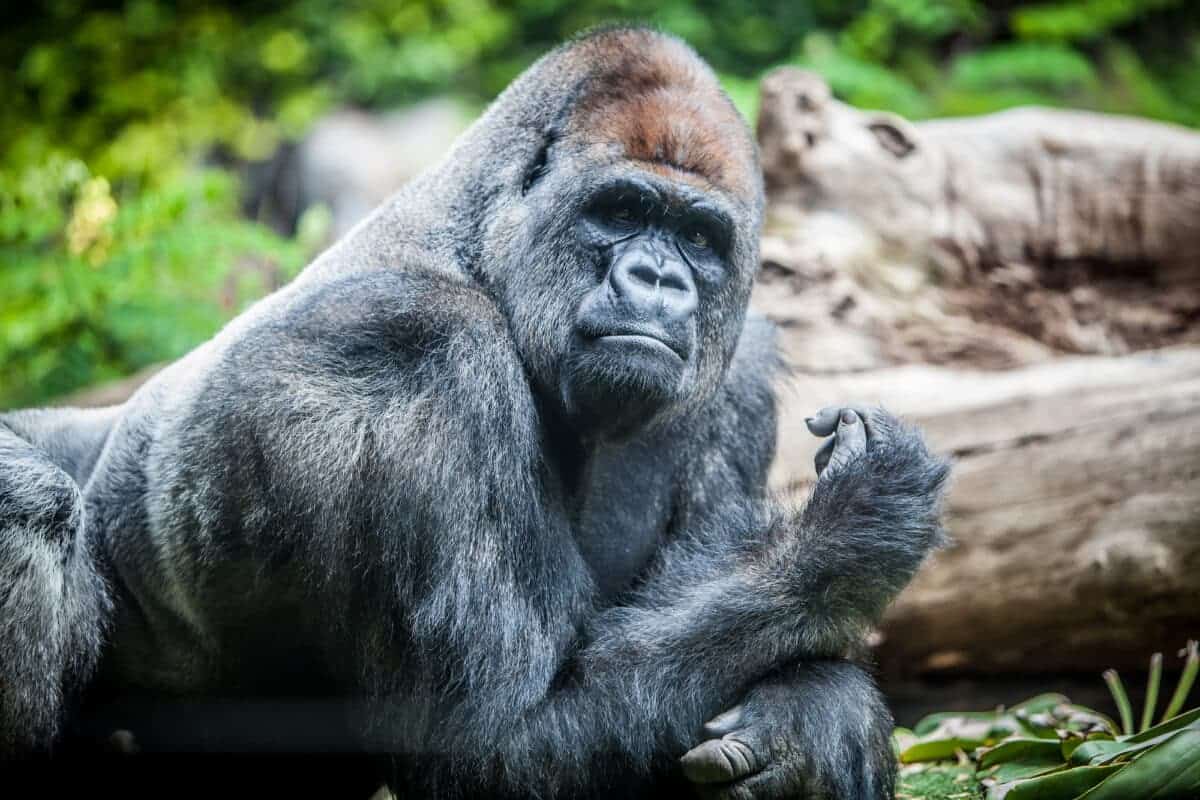
The dense vegetation and seasonal rainfalls in these regions provide a natural camouflage for gorillas and African forest buffalos. Helping them to go unseen and evade predators such as leopards and lions. Gorillas can also climb trees and make nests for safety. While African forest buffalos are known for their thick skins and robust bodies that protect them from attacks.
Furthermore, the lush vegetation in their habitat is also a rich food source for both animals. Gorillas are herbivores and feed on different plant species, such as fruits, leaves, and stems, while African forest buffalos graze on grasses and small plants.
Additionally, the dense forest provides a natural cover for both animals’ breeding grounds, protecting them from predators and other environmental factors.
How Climate And Environmental Changes Affect Gorillas And African Forest Buffalos
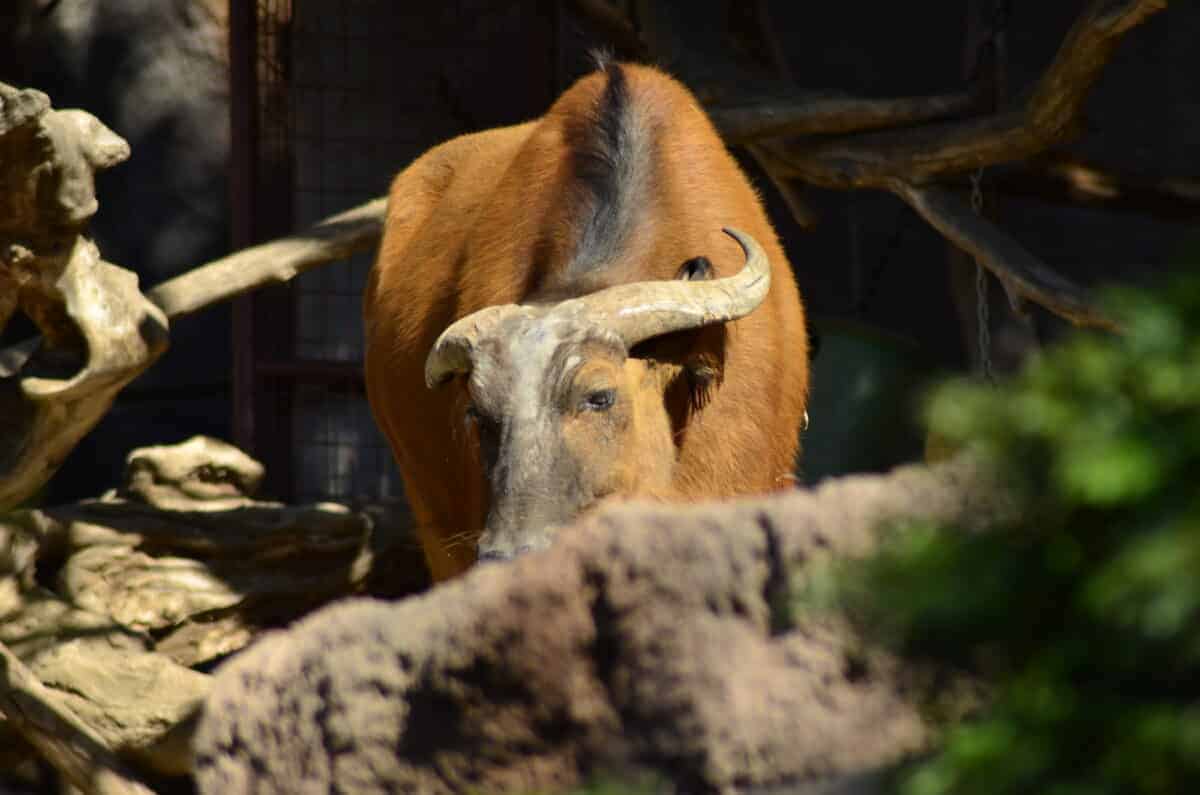
Climate and environmental changes can significantly impact gorillas and African forest buffalos and their habitats. Deforestation, habitat loss due to encroachment of human settlements, and poaching for bushmeat, for example, have consistently posed a significant threat to gorilla populations.
This has recently led to a significant decline in gorillas, prompting conservation efforts to boost the population and protect their habitats from further encroachment.
Similarly, African forest buffalos are also threatened by habitat loss, illegal poaching, and the spread of infectious diseases such as Ebola and other viruses. Changes in rainfall patterns and temperature in their habitat can also impact the availability of food and water, making it more challenging for them to survive.
Key Points
| African forest buffalos are also massive animals weighing up to 1,100 pounds, with a stocky build that gives them a sturdy appearance. |
| When protecting animals, gorillas are a prime example of what nature can give. These majestic creatures are incredibly fierce and protective of their offspring and clan members. |
| Examples of notable gorilla behavior in the wild are plenty. In one instance, gorillas banded together to defend a young clan member from a pack of hyenas. In another case, a male gorilla took on five lionesses when he felt his clan was in danger. |
| African Forest Buffalos and Gorillas inhabit dense tropical forests with lush vegetation, abundant rainfall, and moderately warm temperatures, making their habitats some of the planet’s most biodiverse and productive ecosystems. |
| Climate and environmental changes can significantly impact gorillas, African forest buffalos, and their habitats. |
Wrap Up
Whether the imposing gorilla or the formidable African forest buffalo, each species thrives and prevails on the African continent uniquely. Gorillas are social animals with a strong protective instinct, while African forest buffalos are solitary and highly territorial.
Ultimately, both species deserve our respect and admiration for their incredible survival skills and ability to thrive in the African wilderness.
Thanks for reading along, if you’re wanting more check out our articles below!
Next up: Gorilla Versus the Hare: A Fascinating Comparison, Gorilla and the Chimpanzee: Battle Of The Great Apes, Gorilla compared to the Gray Wolf, Gorilla Vs. Cheetah, and Clash Of The Titans: Gorilla and the Black Rhinoceros.
- Watch Starfish Walking on the Beach - April 24, 2024
- Watch Bison Stampede Around Bus in Yellowstone - April 24, 2024
- How to Survive a Tiger Attack - April 23, 2024

